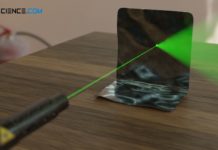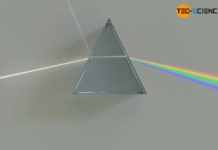Absorption, transmission and reflection are typical phenomena when radiation interacts with matter.
Introduction
When radiation hits an object, different phenomena show how the incident radiation can interact with matter. This includes the following interactions:
- absorption
- transmission
- reflection
In order to demonstrate the interaction of radiation with matter, a laser beam is directed onto a white and a black surface, onto a glass pane and onto a mirror.
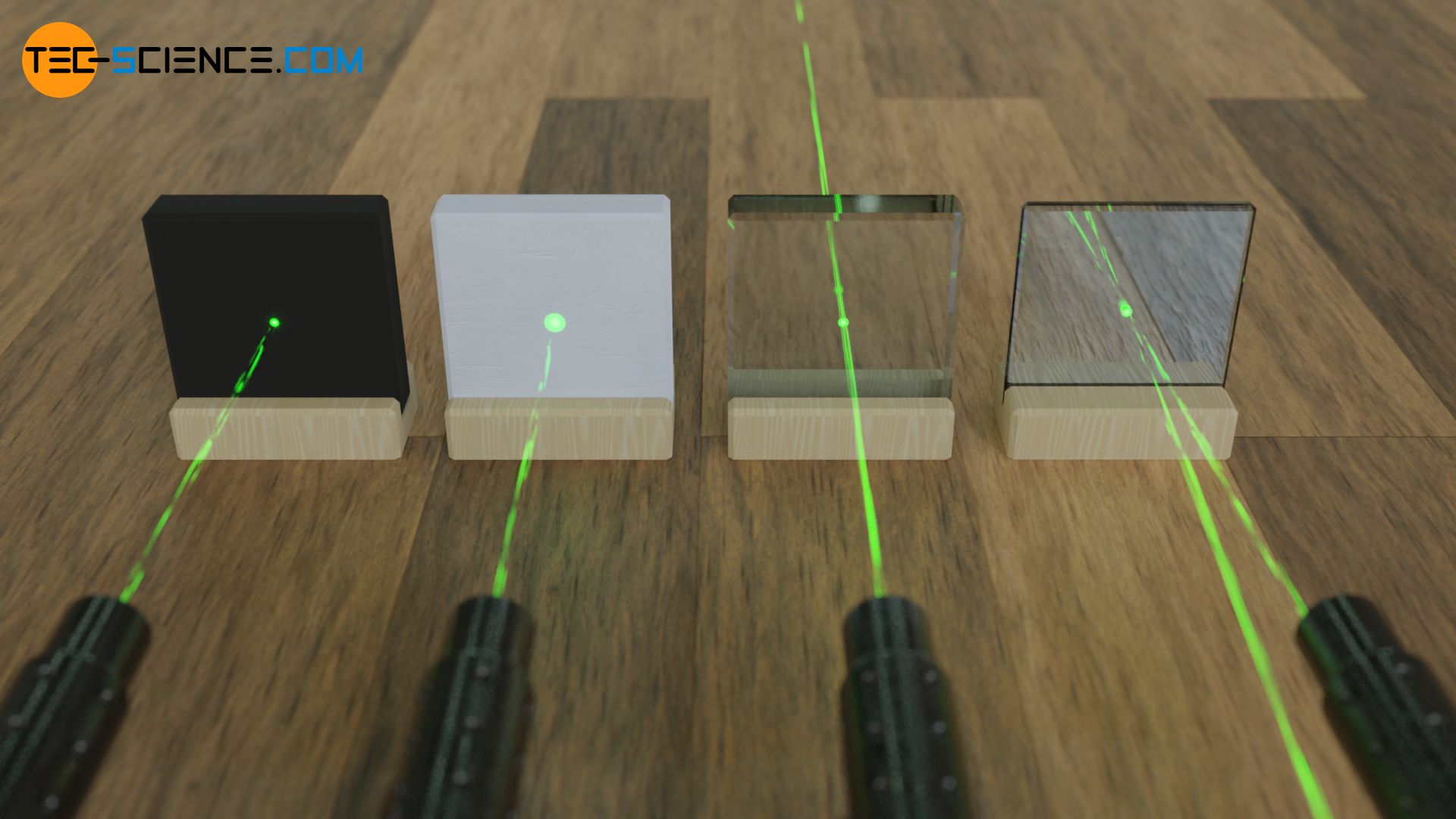
Absorption
While the laser spot on the white surface appears bright, the light spot on the black surface is less intense. Some of the radiant energy is obviously absorbed by the dark surface and is not reflected back afterwards. This phenomenon is therefore called absorption.
Absorption refers to the taking up of radiant energy by an irradiated object!
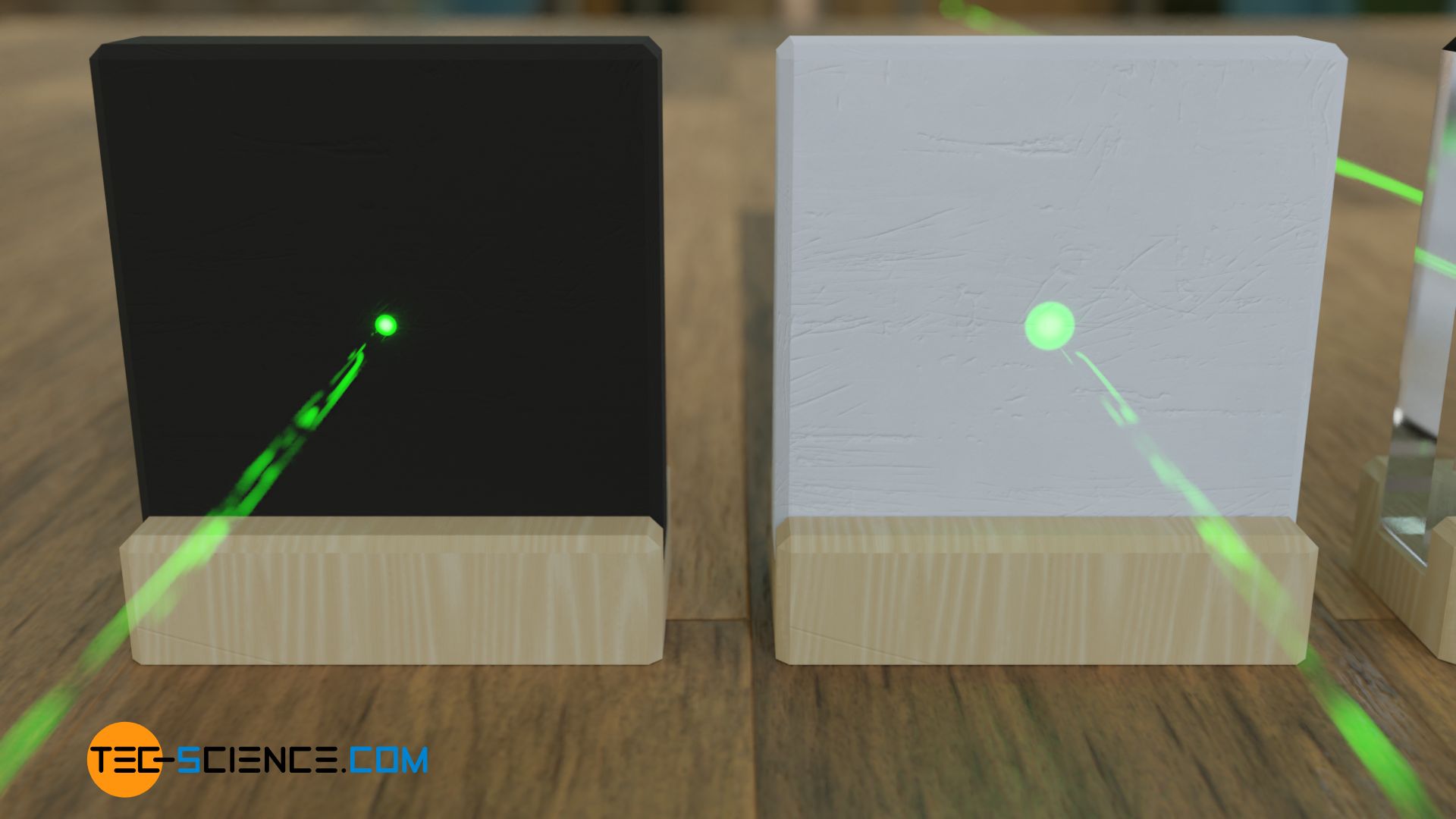
How strongly an object absorbs the incident radiant energy depends to a large extent on the color of the irradiated surface. Surfaces in dark colors absorb visible light more strongly than bright surfaces. This is also the reason why the light spot of the laser beam is less intense on the black surface compared to the white surface. The light is therefore absorbed more strongly by the black surface and is therefore no longer reflected. The white surface, on the other hand, absorbs less light and therefore reflects more. The light spot therefore appears larger and more intense.
As a result of the absorbed energy, the temperature of the irradiated object increases, since the absorbed energy results in increased particle motion. Since dark surfaces absorb more energy, the temperature of a black object increases more than that of a white surface.
Dark surfaces absorb light more than bright surfaces and therefore heat up more!
For this reason, materials for solar heating systems are kept in dark colors. The picture below shows a solar heater mat for a swimming pool. Water is pumped through the black plastic mat. The strongly absorbing mat heats up in the summer with sunshine on temperatures over 60 °C and warms up the water streaming through it.
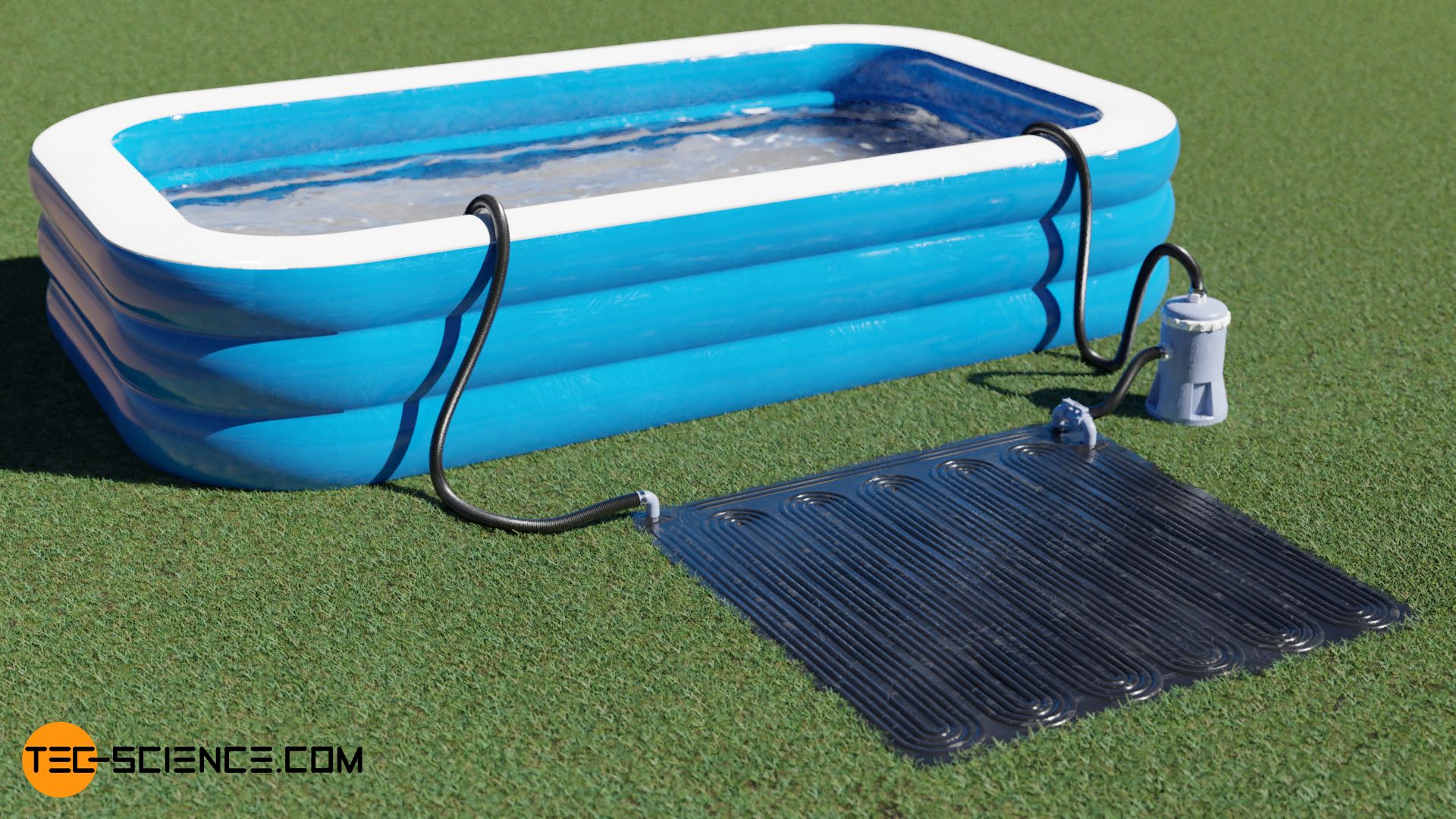
Another example that uses the strong absorption of dark surfaces is the solar cooker shown below. The sun’s rays, which are bundled by reflection, fall on a black cooking pot, which heats up strongly as a result. Within a few minutes, the water inside starts to boil.
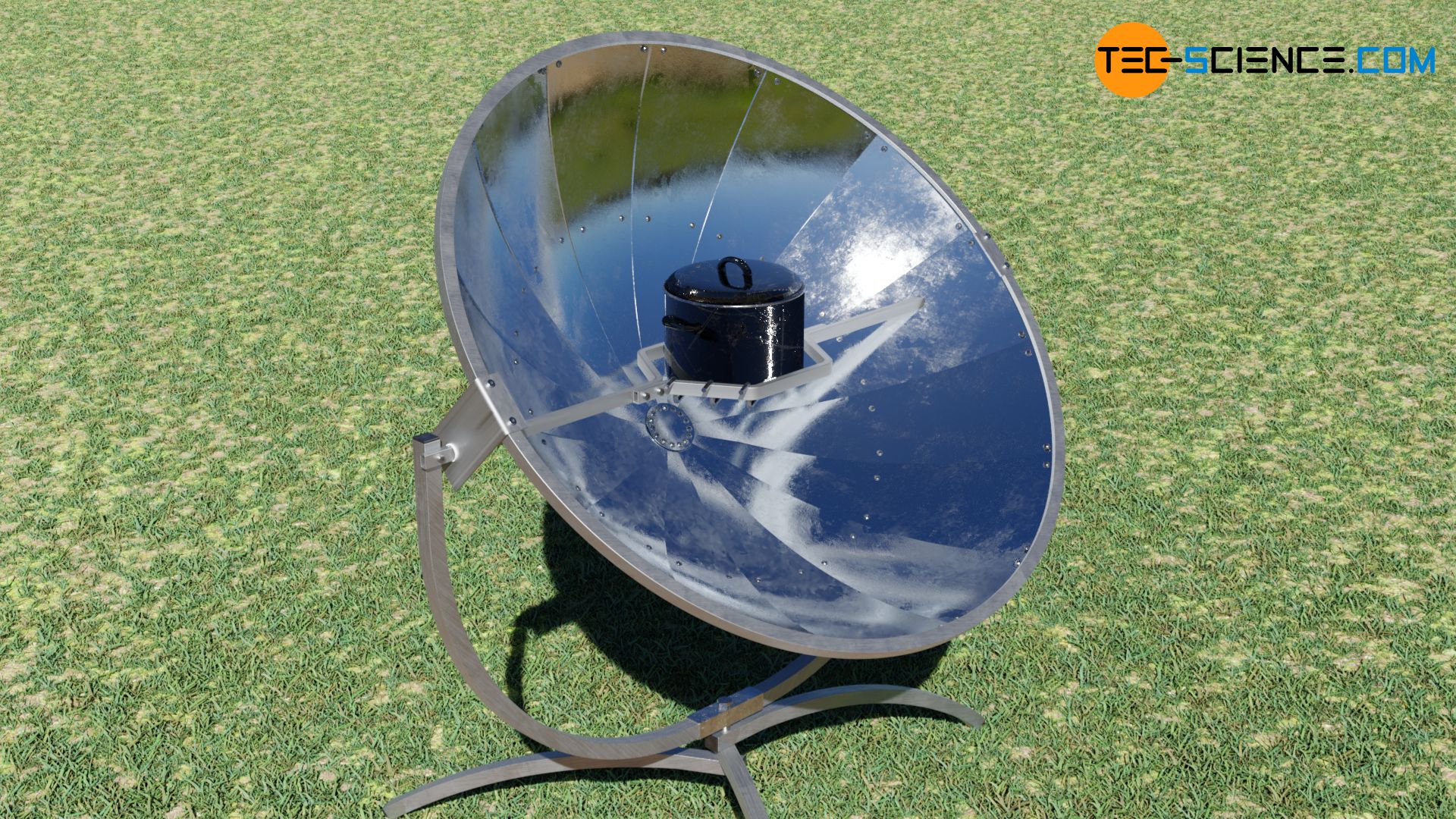
Conversely, white surfaces absorb much less of the light than black objects. The temperature increase is correspondingly lower. This is also the reason why in hot regions the house walls are kept in white.
Transmission
A further interaction of radiation with matter occurs when a laser beam hits a pane of glass. While hardly any light spot can be seen on the glass pane, it is clearly visible on a wall behind it. Obviously, hardly any radiant energy is absorbed when passing through the glass, but is almost completely transmitted through it. This phenomenon is therefore called transmission.
Transmission refers to the penetration of an object with radiation!
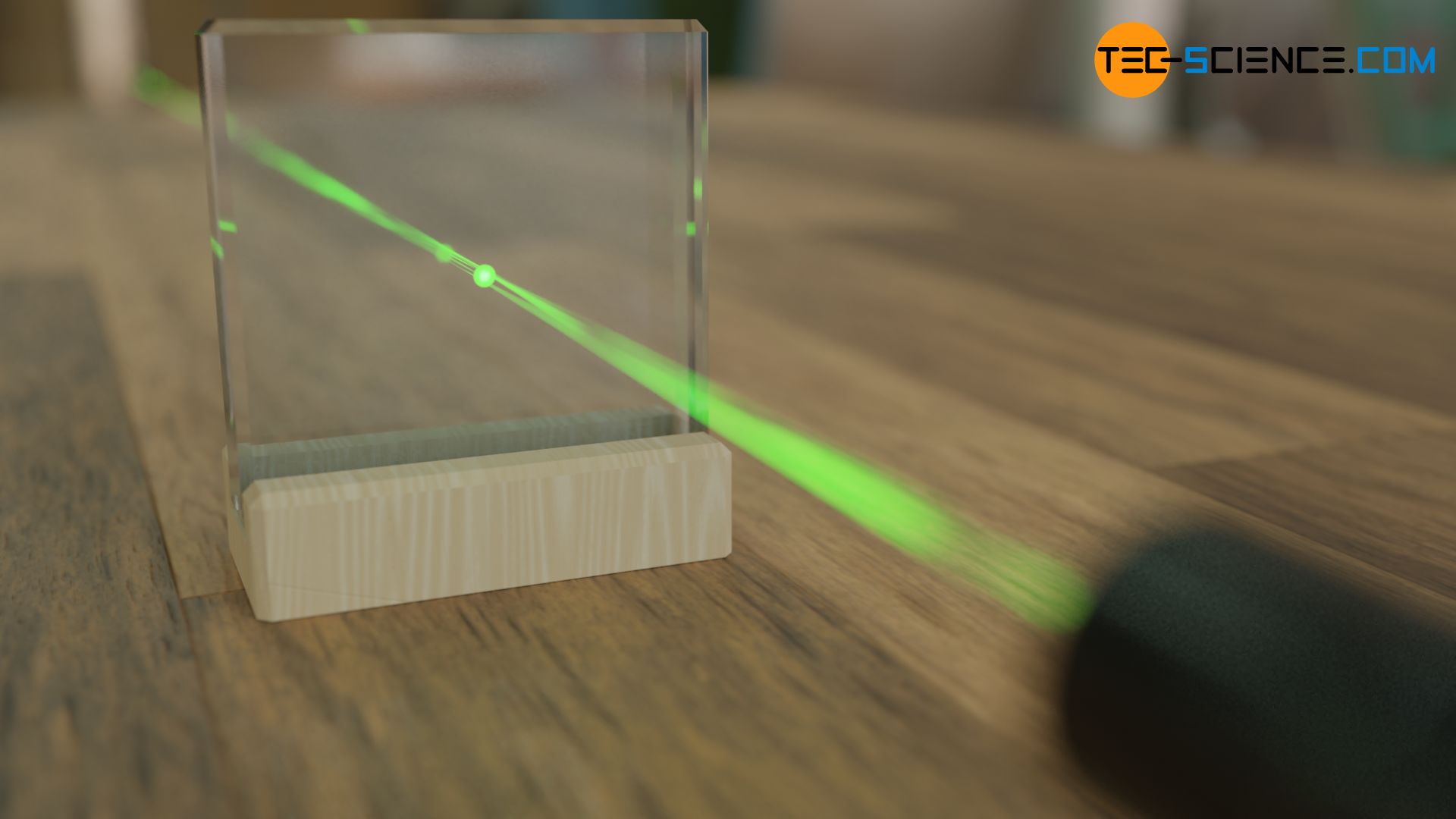
One could now think that there is no “interaction” between radiation and matter during transmission in the literal sense of the word, since the radiation apparently passes through the glass pane unaffected. However, the fact that the light beam is indeed influenced by the glass pane only becomes apparent when the beam is directed with an angle onto a thick glass pane.
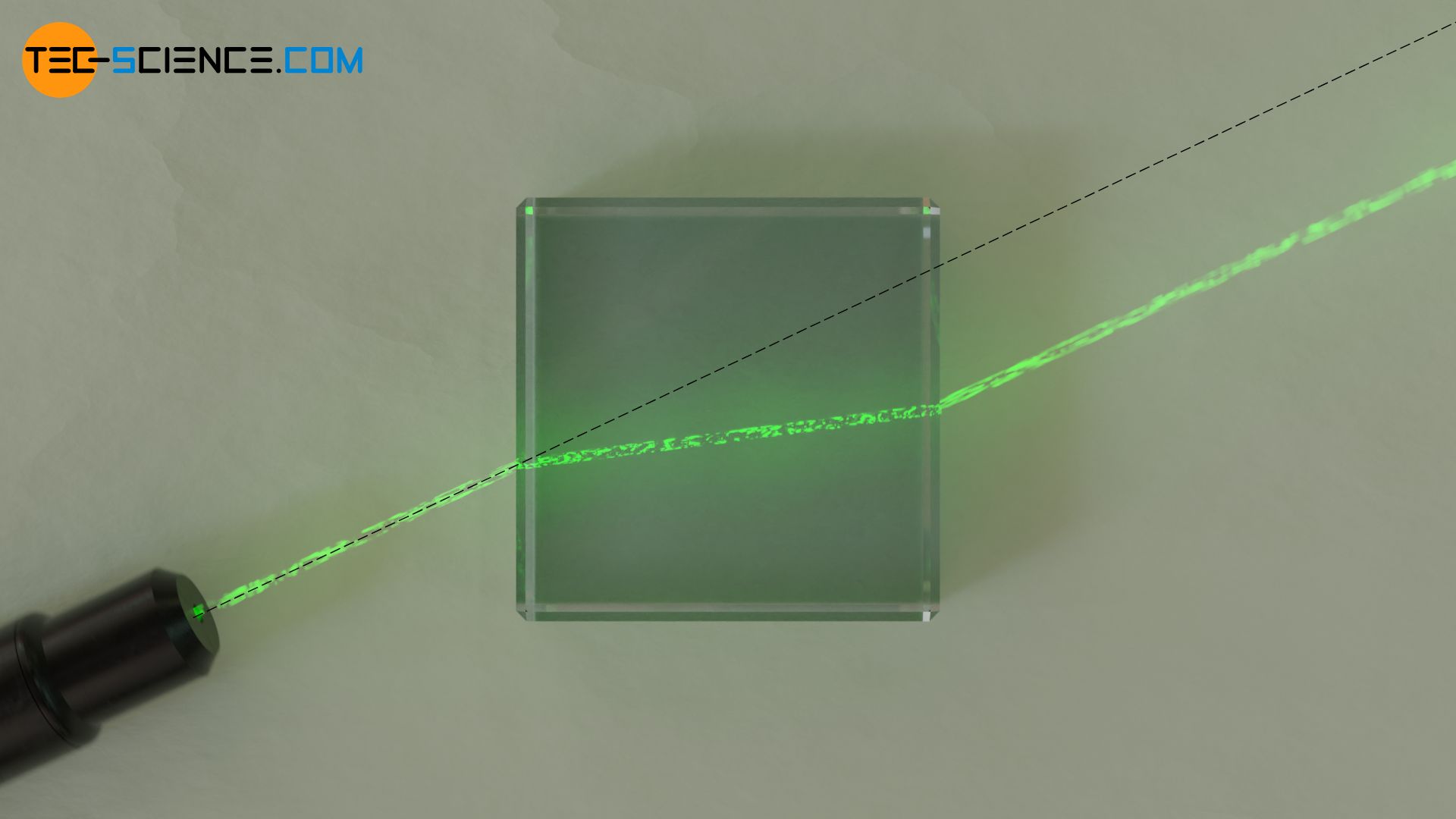
When the laser beam enters the glass pane, there is a change of direction, i.e. the light beam is refracted. Such refraction is caused by the fact that the propagation speed of the light changes when it enters the glass pane. In glass, the light propagates at around 30% less speed than in air. This slower propagation speed results in a change of the propagation direction. The more the speed of propagation changes, the more the beam is refracted. The article Refraction explains the cause of this light deflection in more detail.
Refraction refers to the deflection of a light beam at the transition from one medium to another due to different propagation speeds!
The greatest speed of propagation of electromagnetic radiation is when radiation is not influenced by matter, i.e. in a vacuum. This is also referred to as the vacuum speed of light (the term “light” refers to any kind of electromagnetic radiation, not just visible radiation!). In matter, however, the speed of propagation will always be lower. The factor by which the speed of light in matter is lower compared to vacuum is also called the refractive index. The greater the refractive index, the stronger the change in the speed of propagation and the stronger the refraction.
Since air contains relatively few particles compared to liquid or solid materials, electromagnetic radiation is hardly influenced by air. Therefore, the speed of propagation of radiation in air can be equated in a very good approximation with that of vacuum. The refractive index of air is therefore 1 (to be precise: 1.0003 at 1 atm and 0 °C).
However, glass has a relatively high refractive index of 1.45. Therefore, an incident light beam from air is refracted relatively strongly. If, for example, water with a lower refractive index of 1.33 is used instead of glass, a slightly lower refraction is also shown.
The magnitude of the refraction is not only influenced by the different propagation speeds, but also by the angle at which the beam hits the boundary layer. The flatter the beam incident on the medium, the stronger the refraction. Conversely, this means that a light beam that hits a translucent medium perpendicularly is not refracted.
Note that the laser beam considered above, which hits the glass pane, changes its propagation speed twice. On the one hand when entering the glass pane and on the other hand when leaving the glass. Since the propagation speed increases again to the original value at the exit, a deflection in the original direction also occurs (principle of the reversibility of the light path). The light beam is shifted parallel by the glass. Such a parallel shift can be seen, for example, when looking at objects through a thick pane of glass. With an inclined viewing angle, the objects appear displaced behind the glass pane.
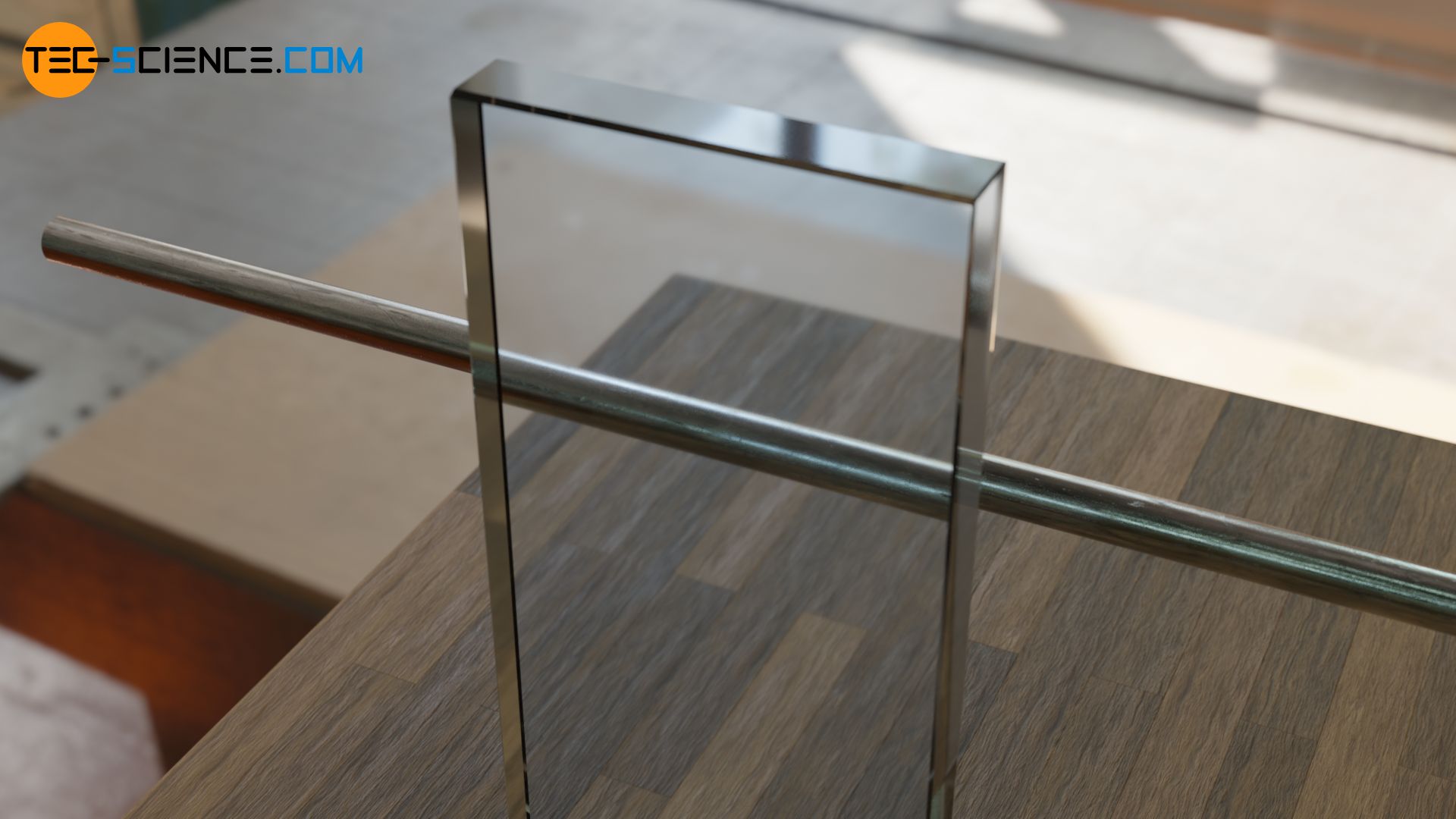
Reflection
If a laser beam is directed onto a mirror, there is no spot of light there, but on the opposite wall. The light beam is deflected (almost) without loss of energy. This phenomenon is called reflection.
Reflection refers to the throwing back of radiation by a “mirroring” object!
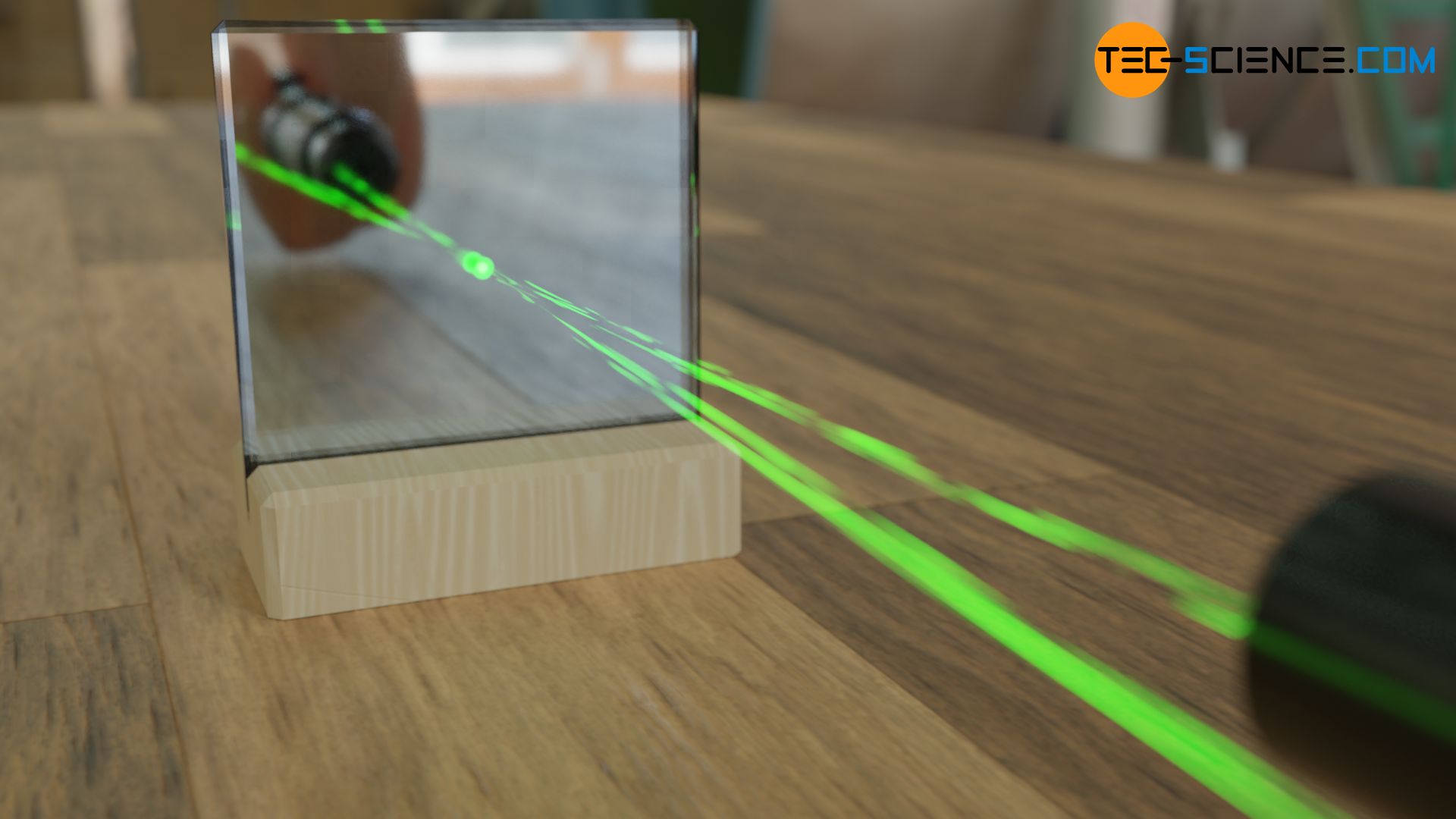
In the case of reflection, a distinction can also be made between specular reflection and diffuse reflection.
Specular (mirror-like) reflection
With specular reflection, the individual rays of a light beam are reflected in a common direction. The so-called law of reflection applies to each ray, which states that the angle at which a light ray hits the reflecting surface is also the angle at which the light ray leaves the surface.
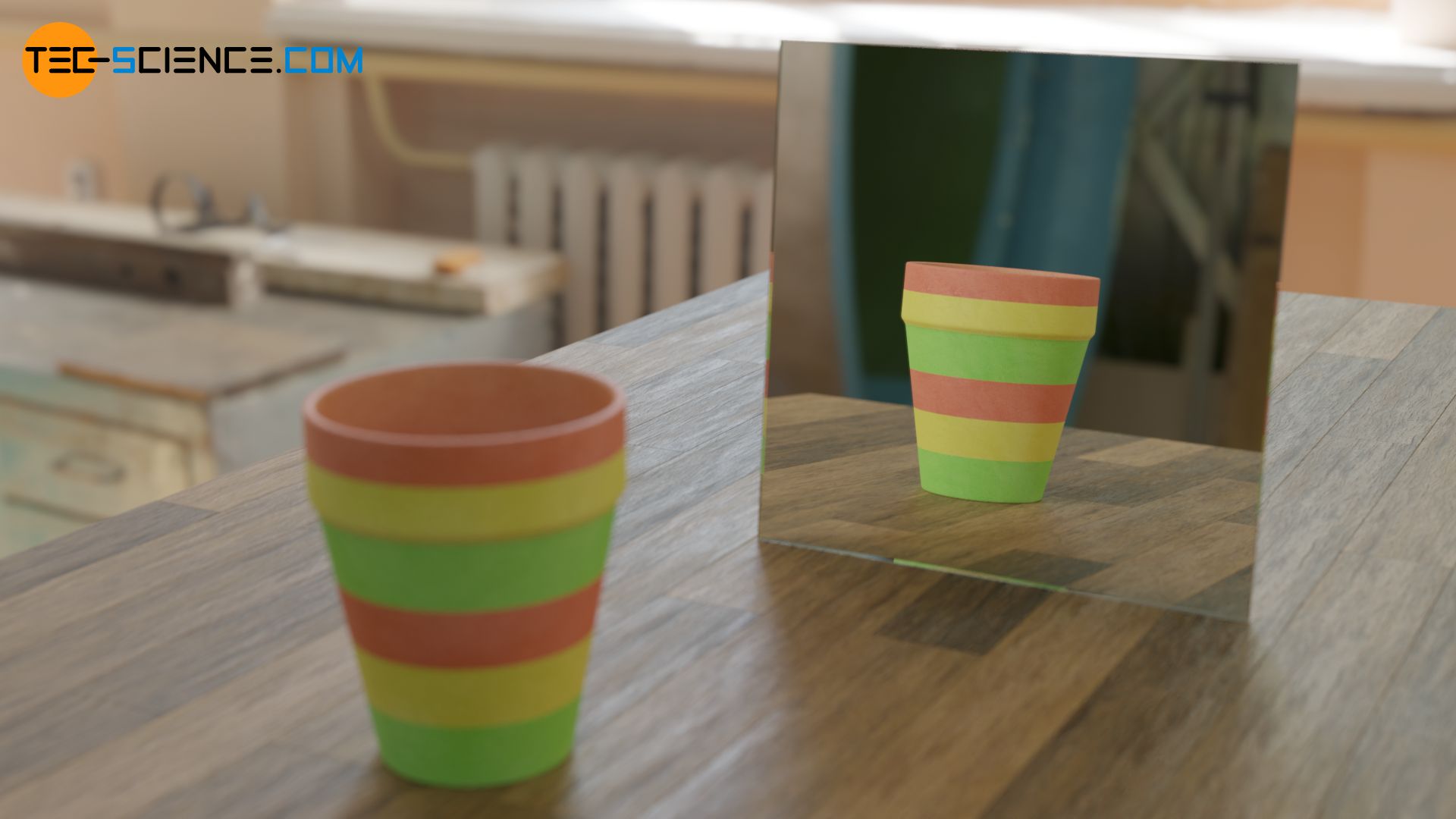
A reflection is called “specular” (mirror-like) when the incident light rays of a light beam are reflected in a common direction!
Specular reflection occurs on smooth, reflective surfaces, e.g. a polished metal surface. Typical examples are mirrors, which ultimately consist of a smooth, reflective metal layer (usually silver or aluminium). To protect against mechanical damage, a glass pane is attached to the front and a lacquer layer to protect against corrosion is attached to the back.
The specular reflection on a mirror is also the reason why you can see objects with a mirror without “distortions”. The individual incident light rays maintain their relative position to each other even after reflection and do not cross each other. Thus, all light rays will fall on the retina of the eye exactly as if one would observe the object directly (apart from the mirror image perception).
Diffuse reflection (scattering)
However, if the metal surface of a mirror is scratched or a corroded metal plate is used, the individual incident light rays are reflected in different directions by the irregularities. The light rays originally incident in the same direction are scattered. Such diffuse reflection is therefore also referred to as scattering.
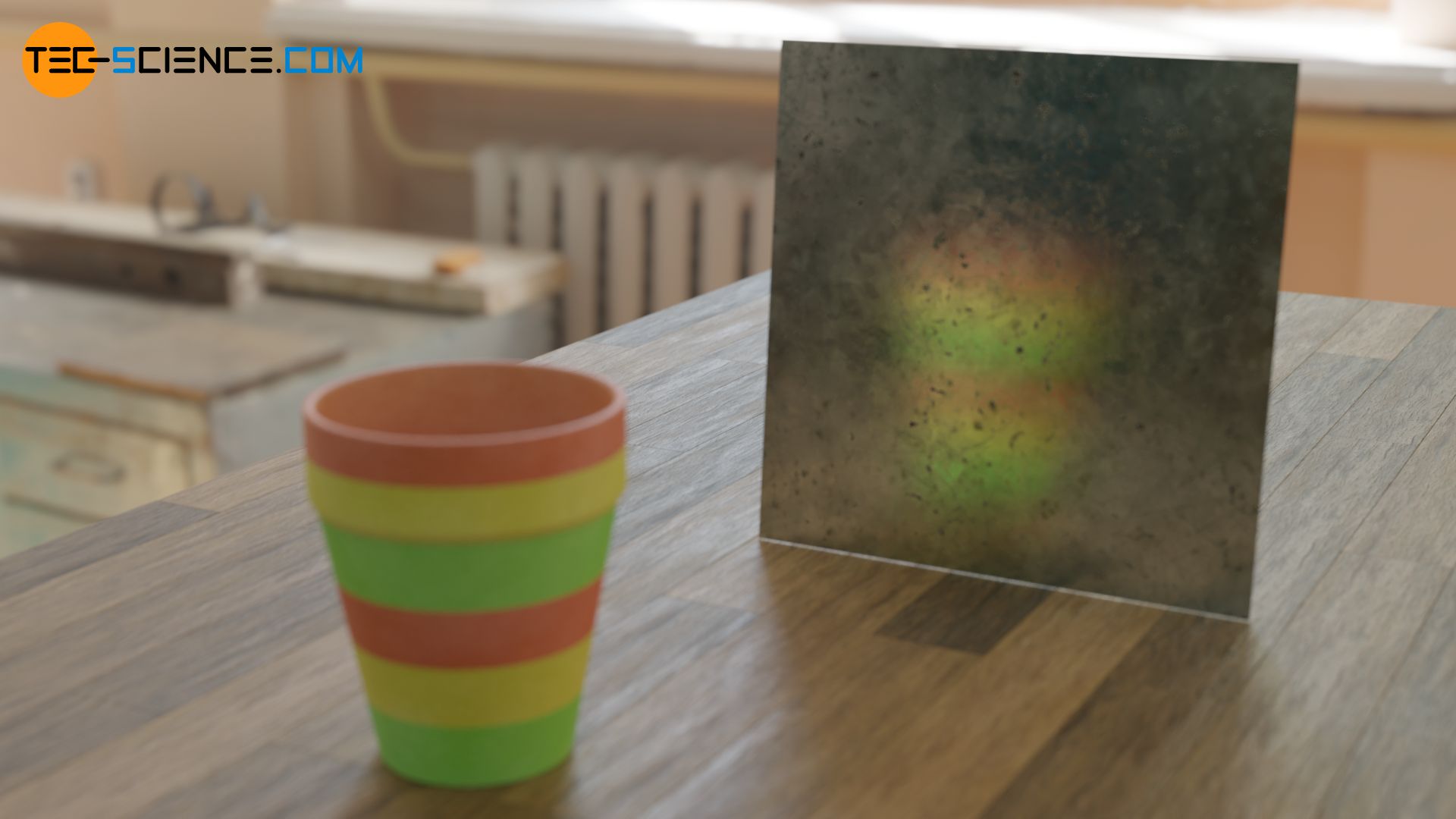
A reflection is called diffuse if the incident light rays of a light beam are reflected in different directions!
Since the diffuse reflection of a corroded metal plate reflects the light rays in different directions, they hit the retina of the eye at different points (represented by the white sheet of paper in the animation below). This results in a distorted or blurred image of the reflected object.
However, the fact that the object can still be seen in a blurred form on the metal plate is due to the fact that in reality there is usually no completely diffuse reflection. In most cases it is a mixed form, as the scattered light rays often still have a certain preferred direction.
Interactions in reality
Reality shows that absorption, transmission and reflection (both specular and diffuse) are generally not separate but always occur in combination! This can be seen, for example, very clearly with a tinted glass pane.
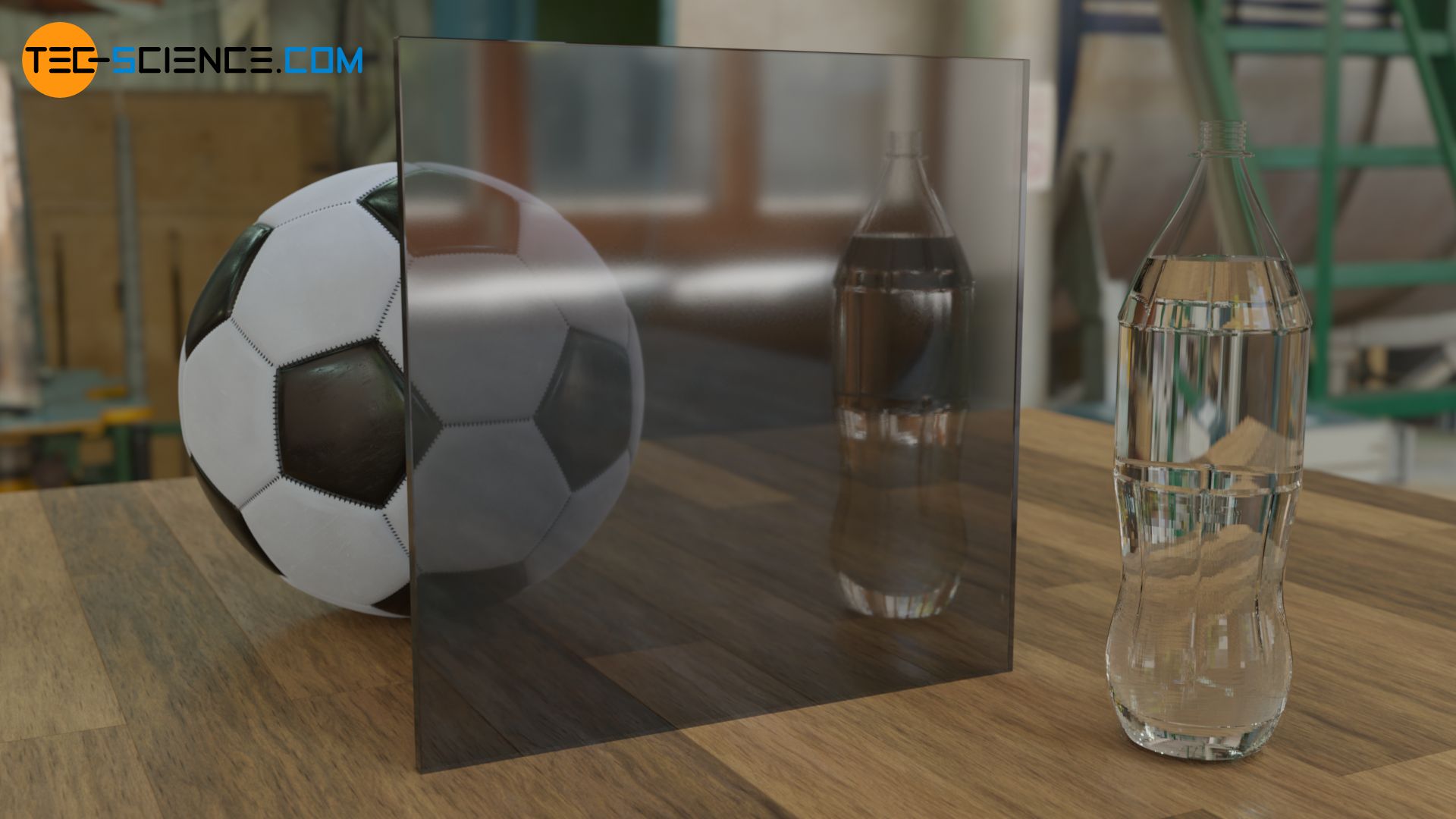
The darkening effect is due to the strong absorption of the light energy by the glass pane. However, the fact that objects can still be seen through the pane shows that light is still transmitted. In addition, reflections can be seen on the glass pane which suggest a certain reflection. Due to the surface roughness, the reflection will not only be specular, but also be diffuse.
Dependence of the interactions on the wavelength
The interactions explained above, such as absorption, transmission and reflection, were illustrated using visible light. However, visible light in a wavelength range from approx. 380 nm to 780 nm actually forms only a small part of the entire electromagnetic spectrum. In principle, the interactions described above apply to all types of electromagnetic radiation. The figure below shows the classification of electromagnetic radiation according to wavelength. The transitions between the individual types of radiation are always smooth and overlap partially.
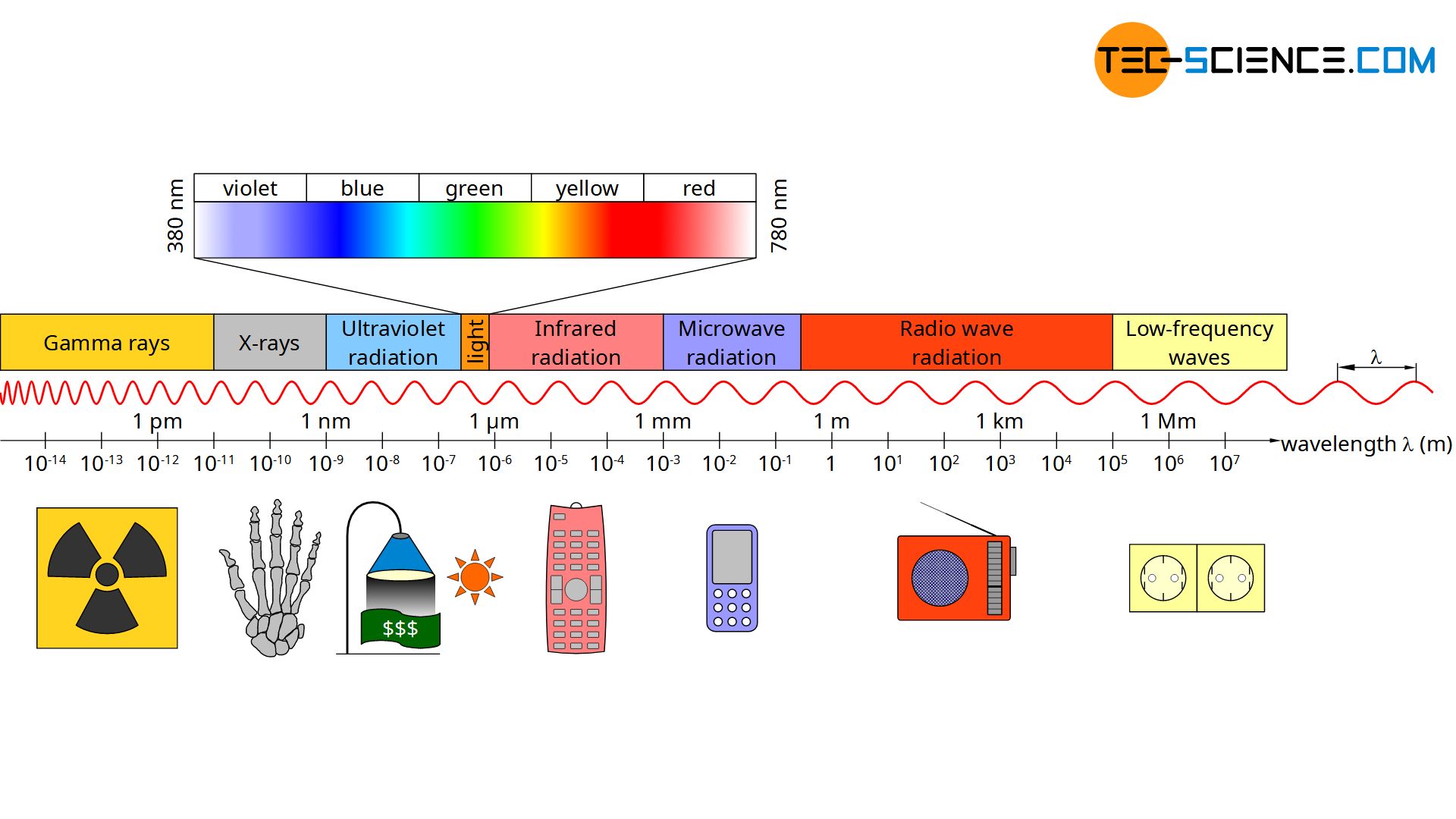
Note: In the narrower sense, the term “light” usually refers only to the part of the electromagnetic spectrum visible to the human eye in the wavelength intervall from 380 nm to 780 nm. In some literature the term “light” in the broadest sense also stands for any kind of electromagnetic radiation.
The ability of an object to absorb, reflect or transmit depends not only on the material, but also on the type of radiation, i.e. the wavelength of the radiation. A pane of glass almost completely transmits visible radiation, i.e. it has a very high transmittance in the visible wavelength range. Shorter wavelengths such as ultraviolet radiation (UV) below 320 nm, on the other hand, cannot penetrate glass! For this type of UV radiation, glass shows a very high absorption capacity! This is also the reason why one cannot tan behind a glass pane, since the tanning UV-B rays do not pass through the glass pane. But you don’t get sunburn for that either.
How strongly an object transmits, reflects or absorbs depends decisively on the wavelength of the radiation!
Another example, which illustrates the dependence of interactions on wavelength, can be seen with human tissue. Visible radiation practically does not penetrate human tissue such as the skin. Therefore no bones can be seen through the skin. Radiation with shorter wavelengths such as X-rays, however, is able to penetrate human skin.
In hospitals, X-rays are therefore used to make bones (which in turn are impermeable to X-rays) visible with the aid of X-ray images. However, X-rays are not only transmitted by human tissue but are also absorbed to a certain degree, which ultimately makes X-rays dangerous for the human organism, as cells are destroyed by the large amount of radiant energy absorbed. As protection against unwanted irradiation, lead mats are therefore used, which in turn are impermeable to X-rays.

